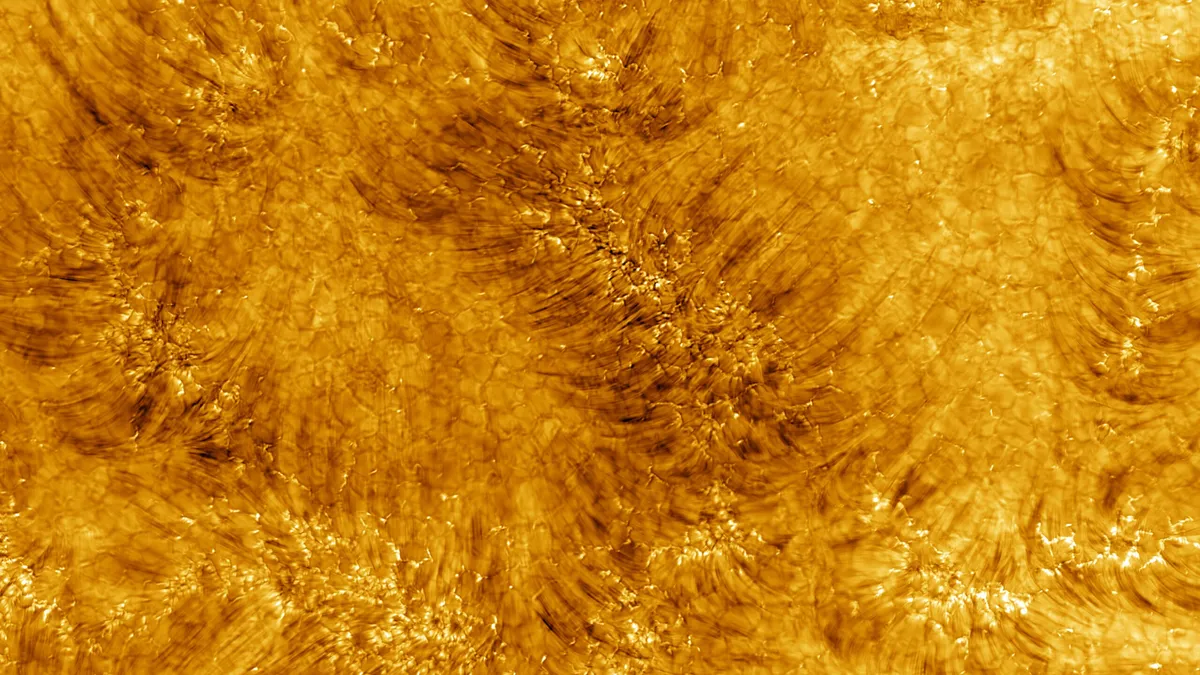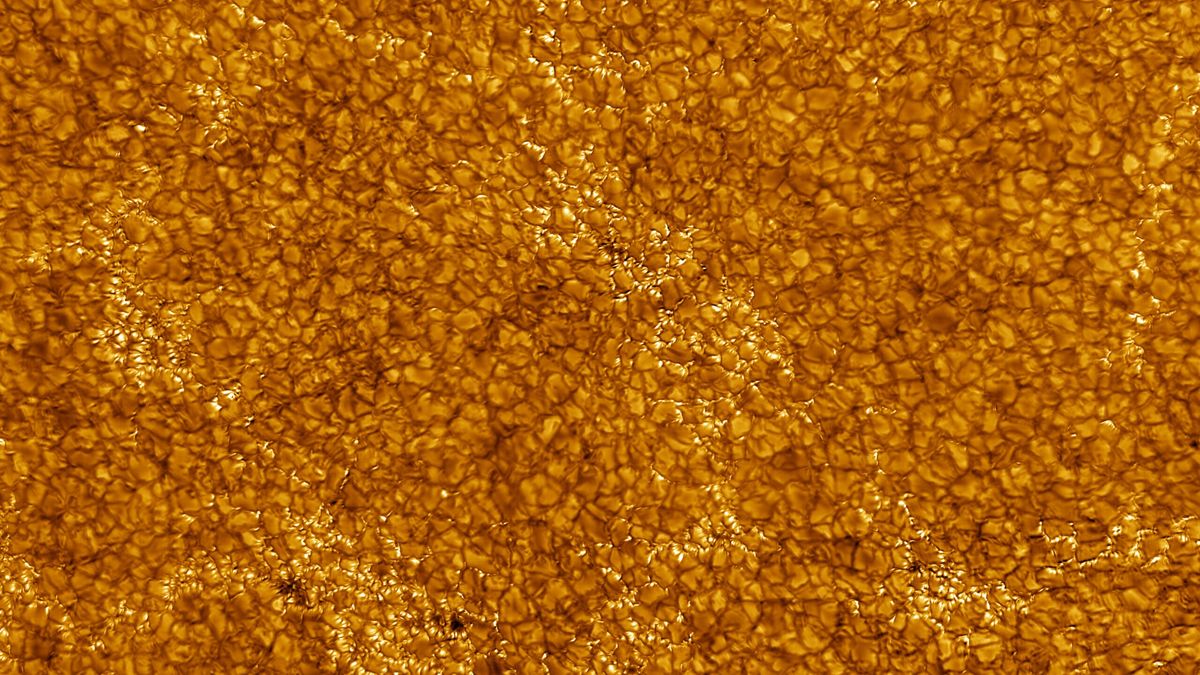 |
| One of the first images of the sun's lower atmosphere, the chromosphere,was captured by Daniel K. Inouye Solar Telescope on June 3, 2022. (Image credit: NSO/AURA/NSF) |
The first comprehensive image of the sun's chromosphere, the layer of its atmosphere just above its surface, has been acquired by the world's most powerful solar telescope. According to a statement, the newly published image of the chromosphere shows a region that is approximately 51,000 miles (82,000 kilometers) wide and was obtained on June 3 by the world's most powerful solar observatory, the Daniel K. Inouye Solar Telescope (DKIST) in Hawai'i. DKIST is in a one-year transition stage between construction and normal science operations, during which it is collecting selected solar observations in between instrument work and other final preparations.
The chromosphere, like the sun's outer layer of atmosphere known as the corona, is normally difficult to observe because light from the photosphere, which may be informally characterized as the star's surface, usually overpowers it. When light from the photosphere is covered by the moon, the area may only be seen as a brilliant red ring around the main body of the sun in photographs captured during a total solar eclipse.
However, the Daniel K. Inouye Solar Telescope, which is built and maintained by the National Solar Observatory (NSO) and supported by the National Science Foundation (NSF), has altered that. The telescope's goal is to transform solar physics, especially scientists' knowledge of the sun's magnetic field. One important component of this is the study of space weather, which includes solar outbursts such as brilliant solar flares and coronal mass ejections (CMEs) that blast globs of material into space. Space weather may be harmful to Earth's communications and energy infrastructure; this is especially important now that the 11-year solar cycle is on the rise.
DKIST is located in the Haleakal Observatories site on the Hawaiian island of Maui, a spiritual and culturally significant location for Native Hawaiians. This location, at an elevation of 10,000 feet (3,000 meters) and surrounded by ocean, provides the telescope with the long daylight hours that a solar telescope requires, as well as the clear skies with minimal interference from Earth's atmosphere required to observe the sun's corona and chromosphere. DKIST employs the biggest mirror available in any sun-studying equipment. This 13-foot (4-meter)-wide mirror assists the telescope in collecting more sunlight than any other solar telescope. As a result, the photos of our star are the cleanest and highest resolution ever taken.
On Aug. 31, NSF executives and representatives of the scientific and Native Hawaiian communities gathered at the site to formally launch the telescope, which had been in the works for a quarter-century.
According to NSF Director Sethuraman Panchanathan, the NSF's Inouye Solar Telescope is the world's most powerful solar telescope, and it will permanently revolutionize how we investigate and comprehend our sun. Its findings will change how our country and the world forecast and prepare for occurrences like solar storms.
 |
| A second image from DKIST observes a different wavelength of light. (Image credit: NSO/AURA/NSF) |
 |
| A DKIST image of the chromosphere with an image of Earth to indicate scale. (Image credit: NSO/AURA/NSF) |



0 Comments